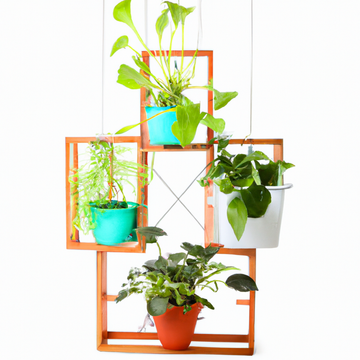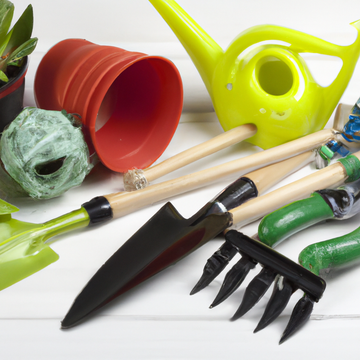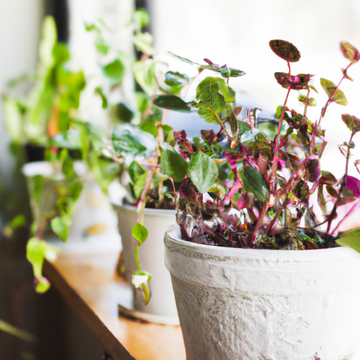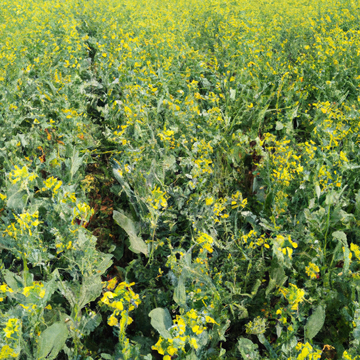Gardening Blog
Growing Your Greens: The Benefits of Using Grow Bags for Planting
by GOLDDUST- Rethink&Revive on Apr 19, 2023
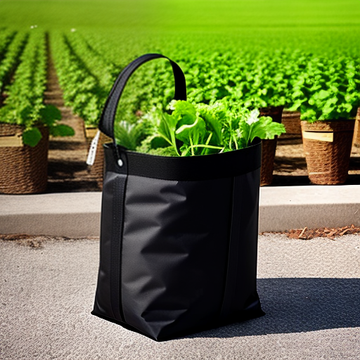
Are you looking for a new way to grow your greens and vegetables? Look no further than grow bags! These versatile, portable planters offer numerous benefits over traditional pots or in-ground planting. From eco-friendly fabric options to easy mobility, there are plenty of reasons to consider using grow bags in your gardening routine. In this article, we'll explore the advantages of using grow bags for planting, as well as tips for choosing the right type and caring for your plants once they're growing strong. Let's get started!
What are grow bags?
Grow bags are a type of planter made from various materials like fabric, plastic, or even paper. Unlike traditional pots or in-ground planting, grow bags offer several advantages for gardeners looking to grow healthy plants with ease.
One of the primary benefits of using grow bags is their mobility. Because they're lightweight and portable, you can move them around your garden as needed to take advantage of changing sun exposure or weather conditions.
Additionally, many types of grow bags are designed with eco-friendliness in mind. Fabric options made from recycled material allow excess water to drain away while still retaining moisture and nutrients for plant roots to absorb.
Grow bags come in a variety of sizes and shapes suitable for different plants' needs. Some variations feature handles that make it easy to transport them indoors during colder months or storms.
Grow bags provide an easy-to-use planting option that offers numerous benefits over traditional methods.
The benefits of using grow bags for planting
Grow bags have emerged as a popular planting method among gardeners due to their numerous benefits. Firstly, they are portable and lightweight, which makes it easy to move them around and change the layout of your garden. They can also be placed on patios or balconies where traditional gardening may not be possible.
A significant advantage of using grow bags is that they allow for better drainage compared to conventional pots. The fabric material used in making these bags allows excess water to drain out quickly while retaining enough moisture for plants' healthy growth. This feature prevents overwatering and root rot, which can damage the plants.
Another benefit of using grow bags is that they promote healthier roots development than traditional planters. Since the fabric material allows air pruning of roots, it stimulates new root growth leading to stronger and more extensive root systems.
Grow bag planters are also eco-friendly since they reduce plastic usage in gardening by replacing conventional plastic pots with biodegradable materials like jute or fabric.
Grow bags provide excellent insulation during extreme weather conditions such as heatwaves or frosty winters, keeping soil temperatures consistent throughout the year.
The different types of grow bags
There are a variety of grow bags available on the market, each with their own unique features and benefits. The most common types of grow bags are made from fabric grow bags made up of geotextile, which provide excellent drainage and air circulation for plant roots.
Polypropylene grow bags are durable, reusable, and come in various sizes suitable for growing different plants. They also have UV protection to prevent degradation from sunlight exposure.
Geotextile grow bags are made from breathable fabric that allows water to drain easily while preventing soil erosion. They can be used for indoor or outdoor gardening and come in various shapes like round or square.
Felt-based grow bags offer superior insulation properties due to their thickness which helps regulate plant root temperature especially during hot weather conditions.
Air pruning pots are designed with special bottoms allowing roots to become exposed once they reach the bottom; this promotes lateral branching stimulating root growth resulting in healthier plants with more prolific yields.
Ultimately, choosing the right type of grow bag depends on your specific needs: whether you want something reusable or disposable, lightweight or heavy-duty, small-sized for individual plants or large enough for multiple ones.
How to choose the right grow bag for your plants
When it comes to choosing the right grow bag for your plants, there are a few things you should consider. First and foremost is the size of the bag. Make sure to choose a bag that is appropriate for the type of plant you will be growing. Some plants require more space for their roots than others.
The material of the bag is also important to consider. Fabric grow bags are becoming increasingly popular because they allow for better drainage and air circulation, which can promote healthier root growth. Geo fabric grow bags are another option that offer similar benefits.
If you plan on using your grow bags outdoors or in an area with extreme temperatures, it's important to choose a durable material that can withstand harsh weather conditions like UV rays and freezing temperatures.
Another thing to keep in mind when choosing a grow bag is its shape. Different shapes may work better depending on where you plan on placing them – round or square-shaped bags tend to be more stable while tall, narrow bags can save space in tight areas.
Don't forget about aesthetics! There are plenty of stylish options available if you're looking for something that will complement your outdoor decor. With these considerations in mind, finding the perfect grow bag for your plants should be a breeze!
Planting in grow bags
Planting in grow bags is a great option for those who have limited space or want to start a container garden. First, choose your grow bag size based on the type of plant you want to grow. A larger bag is suitable for vegetables like tomatoes, while smaller bags are perfect for herbs and flowers.
After selecting your desired size, fill the bag with potting soil up to about an inch below the rim. Add fertilizer if needed during this step. Next, create a small hole in the center of the soil and place your seedling into it gently.
Make sure that each plant has enough space between them so they can receive adequate sunlight and nutrients from the soil. Water thoroughly after planting and continue to monitor moisture levels regularly.
One advantage of planting in grow bags is that they are portable; you can move them around as necessary depending on changing weather conditions or light requirements throughout different times of year.
Planting in grow bags allows for flexibility and ease when starting a container garden. So get creative with what you decide to plant!
Caring for your plants in grow bags
Caring for your plants in grow bags is essential to ensure healthy growth and maximum yield. One of the most crucial aspects of caring for plants in grow bags is watering them correctly. Since grow bags tend to dry out quicker than traditional planters, it's important to water them regularly, especially during hot and sunny weather.
It's also vital to provide your plants with adequate nutrients by fertilizing them regularly. While some types of grow bags come pre-fertilized, others may require additional feeding throughout the growing season. You can add organic matter such as compost or worm castings to enrich the soil and promote healthy growth.
Another important aspect of caring for your plants in grow bags is pruning them when necessary. Regularly removing dead or damaged leaves and stems will help prevent diseases from spreading while promoting new growth.
Be mindful of pests that can damage your plants such as aphids or caterpillars. Inspect your plants regularly and use organic pest control methods like neem oil or insecticidal soap if necessary.
By following these simple tips, you can ensure that your plants thrive in their grow bag environment!
Troubleshooting tips for growing plants in grow bags
Growing plants in grow bags is a great way to have a garden in small spaces. However, there may be some challenges that you may face when growing plants in grow bags. Here are some tips to troubleshoot common issues:
Firstly, make sure that the soil is not too wet or too dry. Overwatering can lead to root rot and underwatering can cause wilting of leaves. Check the moisture level regularly.
Secondly, ensure proper drainage by making holes at the bottom of your grow bag. Clogged drains can cause waterlogging which results in poor plant growth.
Thirdly, if you notice yellowing leaves or stunted growth, it could be due to nutrient deficiency. You can add organic fertilizers or compost to improve soil quality and provide essential nutrients for healthy plant growth.
Fourthly, pests and diseases like aphids and fungi can also affect your plants' health. Regular inspection and early identification followed by appropriate measures like using insecticides or fungicides will help prevent further damage.
Choose the right size of grow bag for each type of plant as different plants require different sizes of grow bags depending on their root system size.
With these troubleshooting tips in mind, growing plants in grow bags will become an enjoyable experience with bountiful harvests!
Conclusion
To sum up, grow bags are an excellent option for planting a wide variety of plants. They provide numerous benefits over traditional gardening methods and offer more flexibility in terms of placement and mobility. With different types of grow bags available in the market, you can choose the right one for your specific plant needs.
Make sure to follow our tips on how to plant, care for and troubleshoot any issues that may arise when using grow bags. With proper attention to detail, you'll be able to create a vibrant garden full of healthy plants.
So what are you waiting for? Start growing your greens today with the help of reliable and high-quality grow bags!

